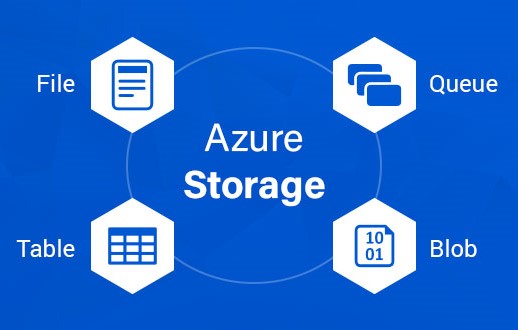Microsoft Azure Storage Accounts: A Comprehensive Overview
 SUBAIR NURUDEEN ADEWALE
SUBAIR NURUDEEN ADEWALE
Microsoft Azure Storage Accounts are a fundamental component of the Azure ecosystem, providing a scalable, secure, and highly available storage solution for various data types. In this article, we'll delve into the world of Azure Storage Accounts, exploring their features, benefits, and use cases.
What is a Storage Account in Azure?
A Storage Account is a container that holds your data in Azure, providing a unique namespace for your storage resources. It's the top-level entity in Azure Storage, and all storage resources, such as blobs, files, queues, and tables, are created within a Storage Account.
Types of Storage Accounts in Azure
Azure offers several types of Storage Accounts, each designed to cater to specific needs and workloads:
General-purpose v2 (GPv2) Storage Accounts: These accounts provide access to blobs, files, queues, and tables, making them suitable for a wide range of applications.
General-purpose v1 (GPv1) Storage Accounts: These accounts are similar to GPv2 accounts but have some limitations, such as limited support for Azure Data Lake Storage Gen2.
Blob Storage Accounts: These accounts are optimized for storing and serving large amounts of unstructured data, such as images, videos, and documents.
File Storage Accounts: These accounts provide file shares in the cloud, allowing you to store and share files across multiple machines.
Premium Storage Accounts: These accounts offer high-performance storage for I/O-intensive workloads, such as databases and virtual machines.
Features and Benefits of Azure Storage Accounts
Azure Storage Accounts offer numerous features and benefits, including:
Scalability: Storage Accounts can scale to meet the needs of your application, providing high availability and performance.
Security: Azure Storage Accounts provide robust security features, including encryption, access control, and auditing.
Durability: Azure Storage Accounts ensure that your data is highly durable and available, even in the event of hardware failures or natural disasters.
Data Tiering: Azure Storage Accounts support data tiering, allowing you to store data in different storage tiers based on its frequency of access.
Integration: Azure Storage Accounts integrate seamlessly with other Azure services, such as Azure Virtual Machines, Azure Functions, and Azure Data Factory.
Use Cases for Azure Storage Accounts
Azure Storage Accounts are suitable for a wide range of use cases, including:
Data Archiving: Store infrequently accessed data in a cost-effective and scalable manner.
Big Data Analytics: Store and process large amounts of data for analytics and machine learning workloads.
Content Delivery: Store and serve static content, such as images and videos, to users around the world.
Disaster Recovery: Use Azure Storage Accounts as a disaster recovery solution for your on-premises data.
Cloud-Native Applications: Build cloud-native applications that leverage Azure Storage Accounts for data storage and processing.
Conclusion
In conclusion, Azure Storage Accounts provide a powerful and flexible storage solution for a wide range of use cases. With their scalability, security, durability, and integration with other Azure services, Storage Accounts are an essential component of any Azure-based application or solution. By understanding the features and benefits of Azure Storage Accounts, you can design and build more efficient, scalable, and secure applications in the cloud.
Subscribe to my newsletter
Read articles from SUBAIR NURUDEEN ADEWALE directly inside your inbox. Subscribe to the newsletter, and don't miss out.
Written by

SUBAIR NURUDEEN ADEWALE
SUBAIR NURUDEEN ADEWALE
Hello! I'm Subair Nurudeen Adewale, a cloud computing enthusiast and the founder of Nucloud Blog. I'm passionate about sharing knowledge and insights on cloud infrastructure, security, innovation, and the intersection of technology and design. As a cloud expert with a keen eye for user experience, I explore the latest trends and best practices in UI/UX, and how they can be applied to create intuitive, user-friendly, and seamless experiences for cloud-based applications and services. Follow Nucloud Blog for the latest updates and insights from the world of cloud computing and UI/UX design.